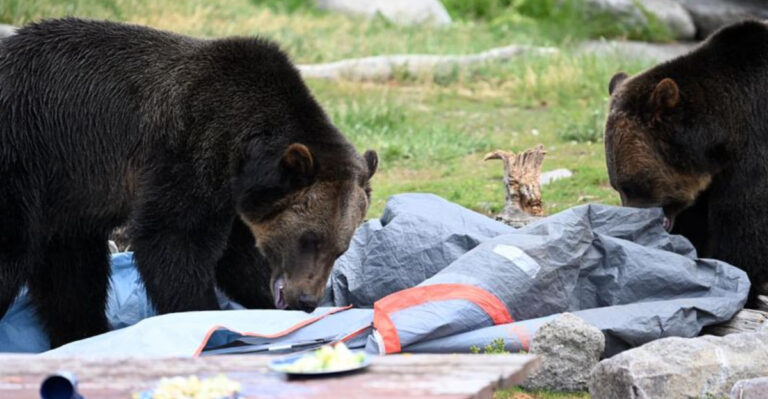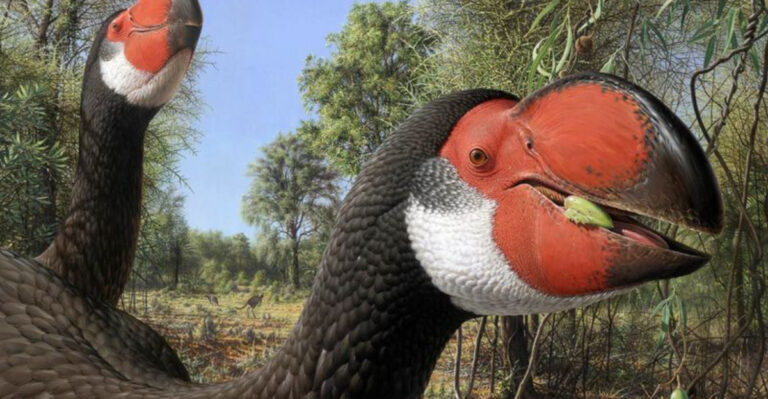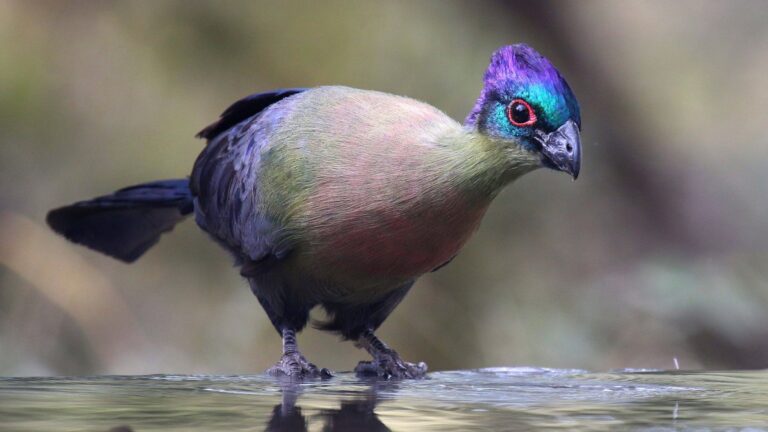15 Facts About The Andean Cock-Of-The-Rock – The Flashiest Bird In The Forest
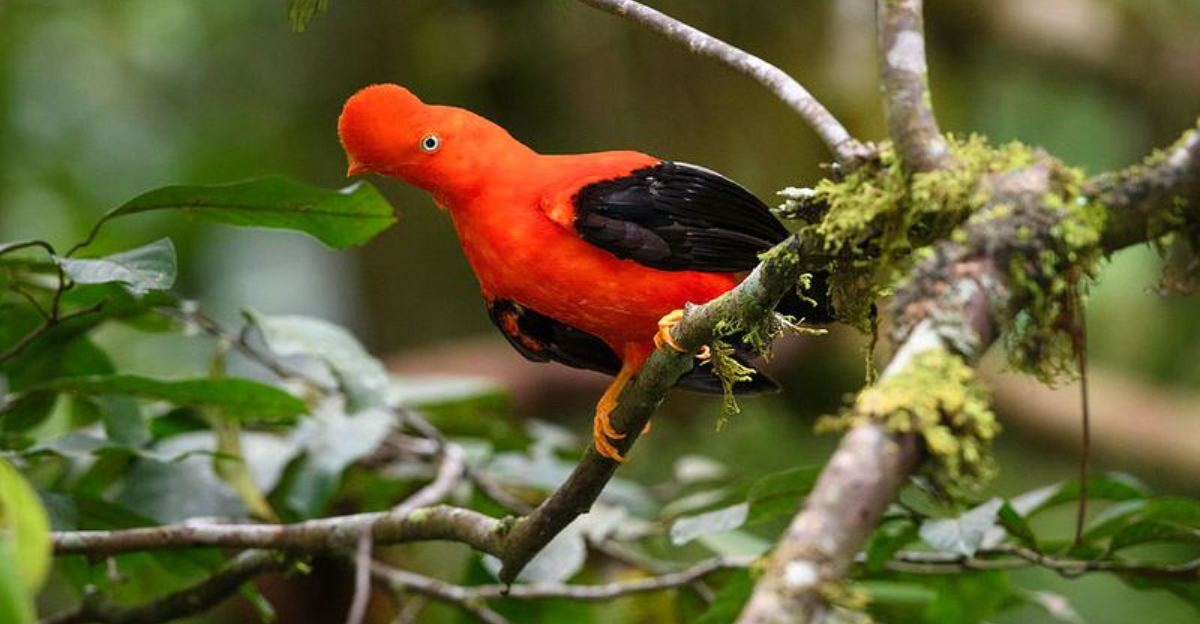
Hidden in the misty cloud forests of the Andes Mountains lives a bird that looks like it flew straight out of a cartoon. The Andean Cock-of-the-rock sports a giant orange mohawk, a squat body, and shows off with wild dance moves that would make any disco star jealous.
These feathered showstoppers are the national bird of Peru and have some truly bizarre habits that make them forest celebrities.
1. Fashion-Forward Feathers
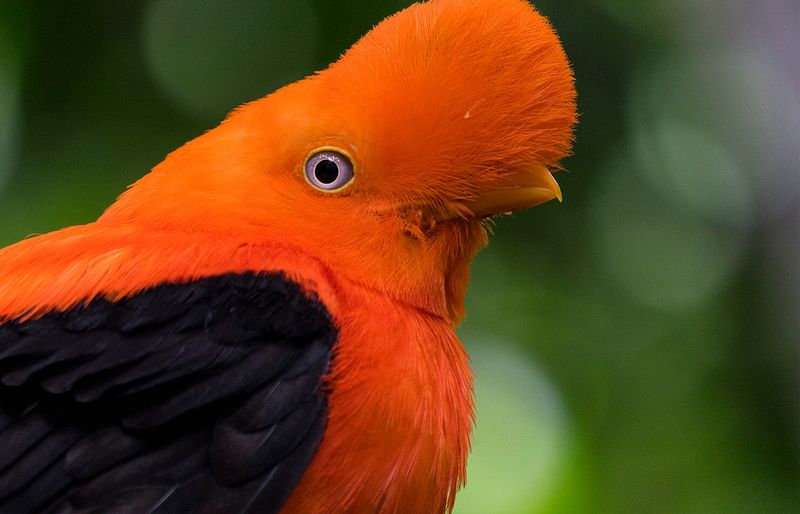
Imagine a bird wearing a puffy orange beret that covers its entire face! Male Andean Cock-of-the-rocks flash brilliant orange-red plumage that practically glows against the dark forest.
Females, playing it cool, wear modest brownish colors. This extreme difference between sexes (called sexual dimorphism) ranks among the most dramatic in the bird world.
2. Disco Dance-Off Champions
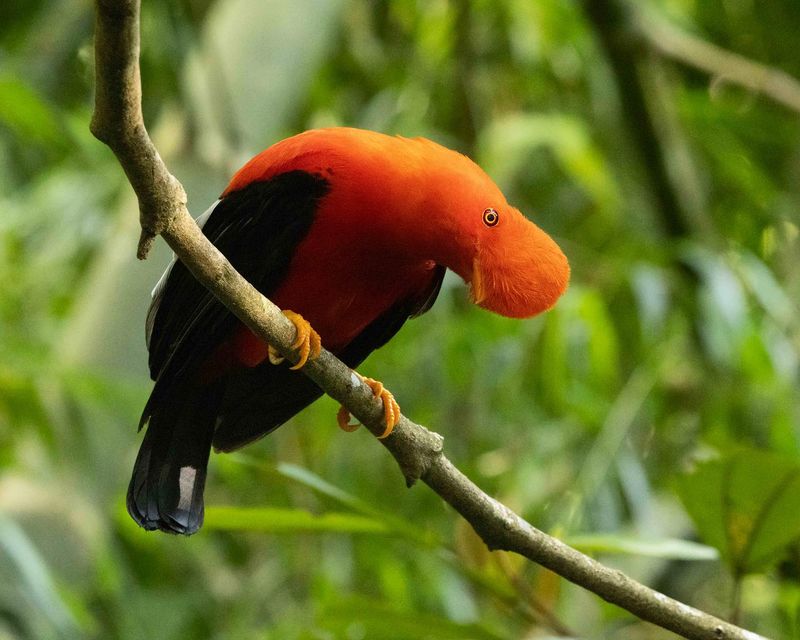
When it’s time to find a mate, males transform forest clearings into nature’s hottest nightclubs. Groups of up to 20 birds gather in special areas called leks to perform wild courtship dances.
They bob, hop, and flick their wings while making bizarre mechanical sounds. Think of it as a feathered version of a dance competition where the ladies judge who’s got the best moves.
3. Name Game Confusion
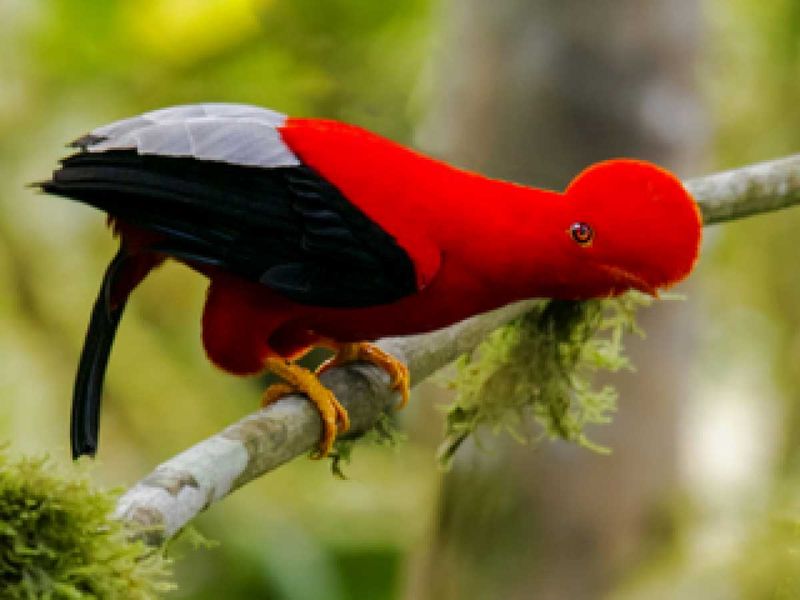
Despite what you might think, these birds aren’t related to roosters at all! Their unusual name comes from their preference for rocky outcrops and cliff faces for nesting, plus that rooster-like crest on their heads.
Spanish explorers called them “gallito de las rocas” (little rooster of the rocks), which eventually became their English name too. An identity mix-up that stuck!
4. Fruit-Loving Foodies
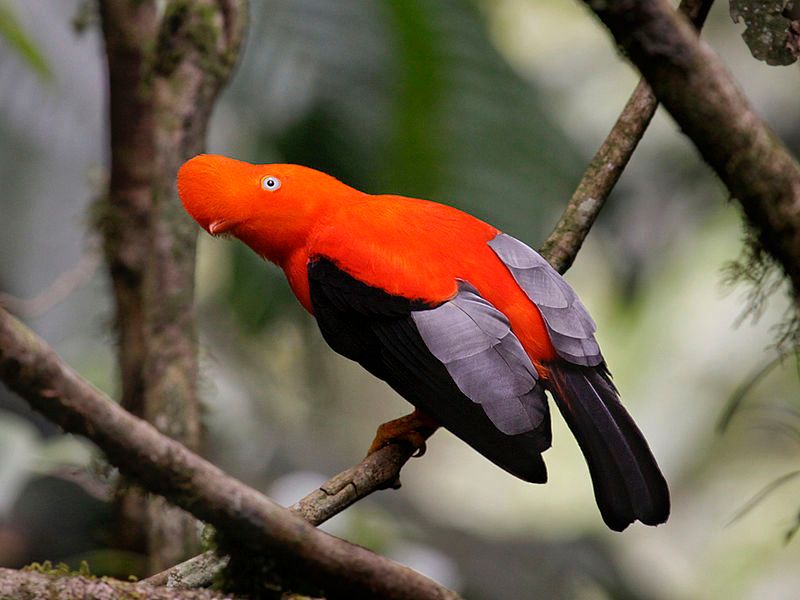
These flashy birds are basically the fruit connoisseurs of the forest. Their diet consists of around 80% fruits, making them crucial seed dispersers for hundreds of plant species.
They’ll gobble berries whole, digest the tasty parts, and then scatter seeds through the forest in their droppings. Small insects and frogs occasionally make it onto their menu as protein-packed side dishes.
5. Single Mom Superstars

Talk about independent ladies! Female Andean Cock-of-the-rocks handle all parenting duties solo. After mating with a flashy male who impressed her with dance moves, she’s on her own.
She builds the nest, incubates the eggs, and raises the chicks without any help from dad. The males contribute good genes but are too busy dancing to assist with childcare.
6. Cloud Forest Dwellers
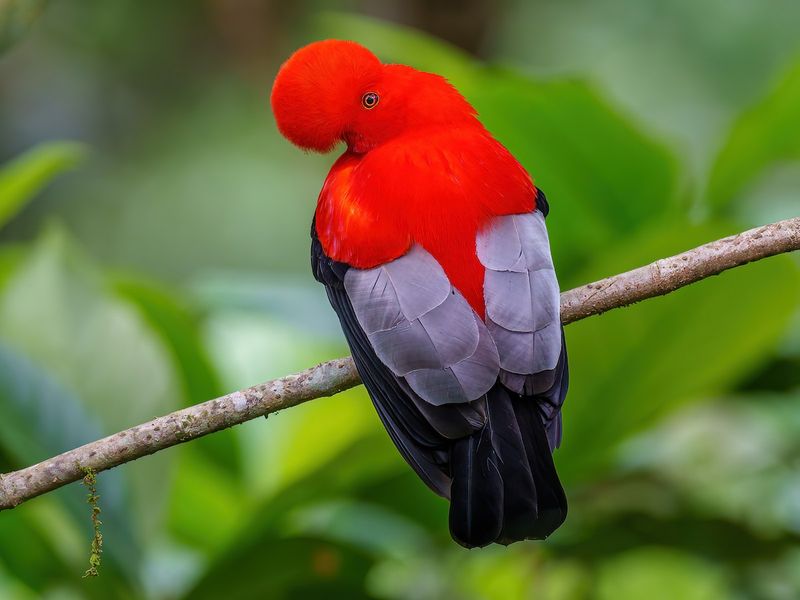
These vivid birds call the mystical cloud forests of the Andes home. They thrive in humid, misty forests at elevations between 1,600-8,200 feet where clouds literally roll through the trees.
Their range stretches across Colombia, Ecuador, Peru, and Bolivia. The foggy, moss-draped forests create the perfect backdrop for their fiery orange feathers to stand out like living flames.
7. Wacky Vocalizations
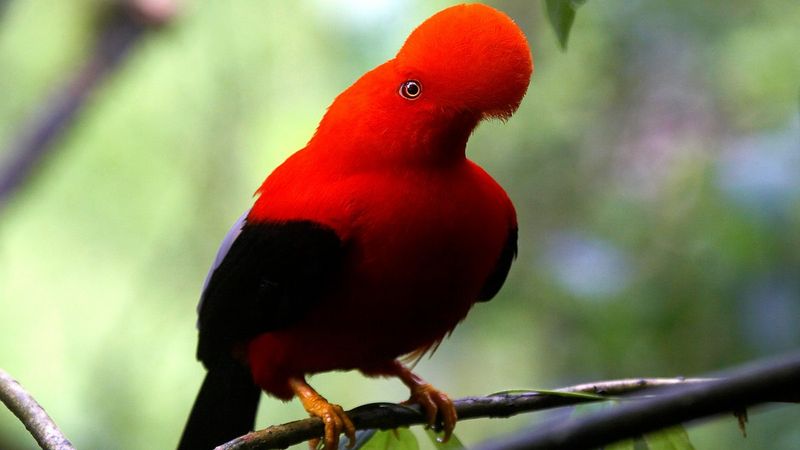
Forget melodious chirping! These birds sound like they’re auditioning for a sound effects job in a sci-fi movie. Males produce bizarre croaks, snaps, and squeaks that echo through the forest.
Some describe the calls as similar to a pig grunting or even a creaky door. When multiple males gather for courtship displays, the combined noise creates an otherworldly forest symphony unlike any other bird chorus.
8. Two Fabulous Varieties
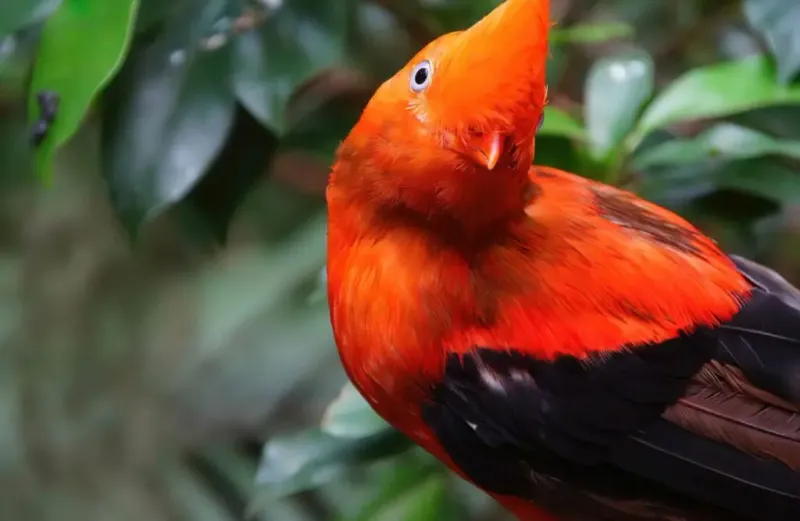
There are actually two types of these flamboyant birds! The Peruvian Cock-of-the-rock sports bright orange-red plumage, while its cousin, the Guianan Cock-of-the-rock, rocks a more reddish-orange look.
They’re similar in size and habits but live in different regions. The Peruvian variety inhabits the Andes, while the Guianan version lives in the tepui mountains and highlands of the Guiana Shield.
9. National Bird Superstar
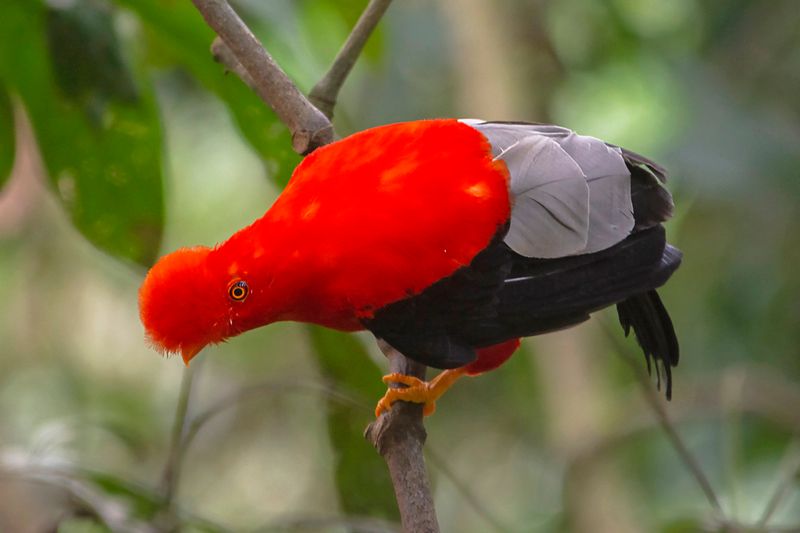
Peru proudly claims this feathered fashionista as its national bird! Known locally as “Tunki,” it appears on Peruvian currency, stamps, and tourism materials.
The bird’s striking appearance makes it an excellent symbol for Peru’s incredible biodiversity. Birdwatchers from around the world travel to special viewing sites in Peru just to catch a glimpse of these living national treasures.
10. Bizarre Head Shape

Look closely and you’ll notice something odd – you can barely see their beaks! Males have a disc-shaped crest that completely covers their face except for their eyes and the tip of their beak.
This unique headgear is actually a modified feather structure called a compressed crest. It makes them look like they’re wearing an elaborate costume mask at all times – nature’s permanent masquerade ball!
11. Cliff-Hanging Nurseries

These birds take “rock” in their name seriously when building homes. Females construct cup-shaped nests using mud mixed with plant material, which they plaster onto steep cliff faces or rocky outcrops.
The nests blend perfectly with the rock surface, making them nearly invisible to predators. This cliff-dwelling habit provides excellent protection for their eggs and chicks from hungry forest predators.
12. Morning Dance Routines
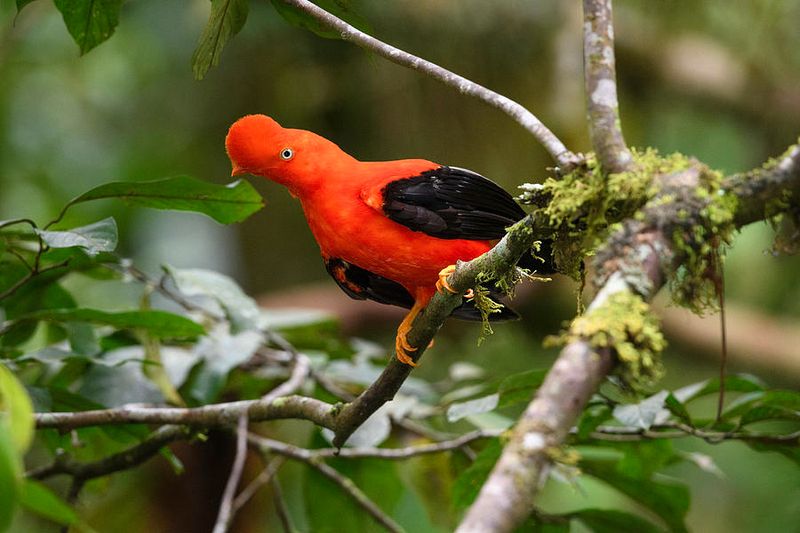
Early bird gets the… mate? Males perform their elaborate courtship dances primarily at dawn and dusk. They’re such dedicated performers that individual birds return to the exact same dancing spot day after day.
Some males have been documented using the same display perch for years! The most dominant males claim the center spots in the lek, while younger or less impressive males must dance at the edges.
13. Sacred Bird Status

Many indigenous Andean communities consider these birds sacred beings. Their vibrant color and unusual behavior earned them special status in traditional folklore and spiritual beliefs.
Some legends claim they’re forest guardians or messengers between worlds. In certain communities, it was taboo to hunt them. Today, they’re protected by law in most countries, continuing their cultural significance.
14. Ecotourism Celebrities
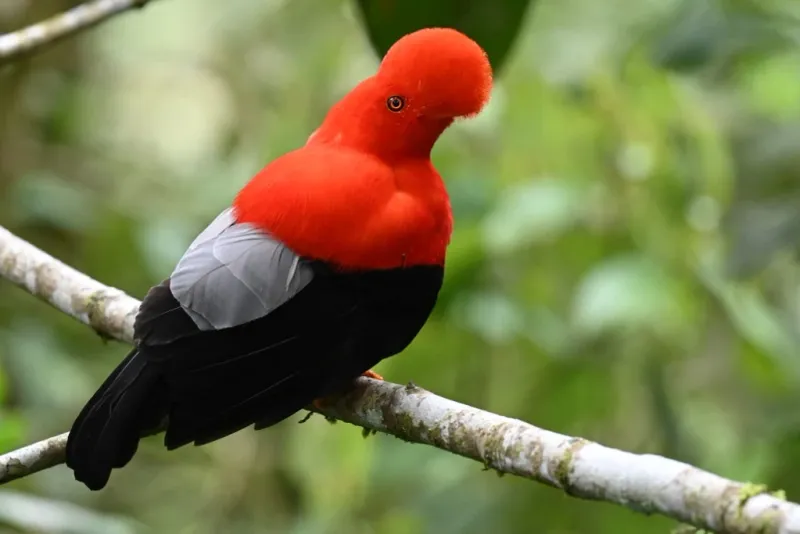
These feathered stars have become poster birds for rainforest conservation! Special viewing blinds near leks allow tourists to watch the spectacular mating displays without disturbing the birds.
This sustainable ecotourism provides income for local communities while protecting the birds’ habitat. Many lodges in Peru and Ecuador specifically advertise Cock-of-the-rock viewing opportunities as their main attraction.
15. Forest Health Indicators
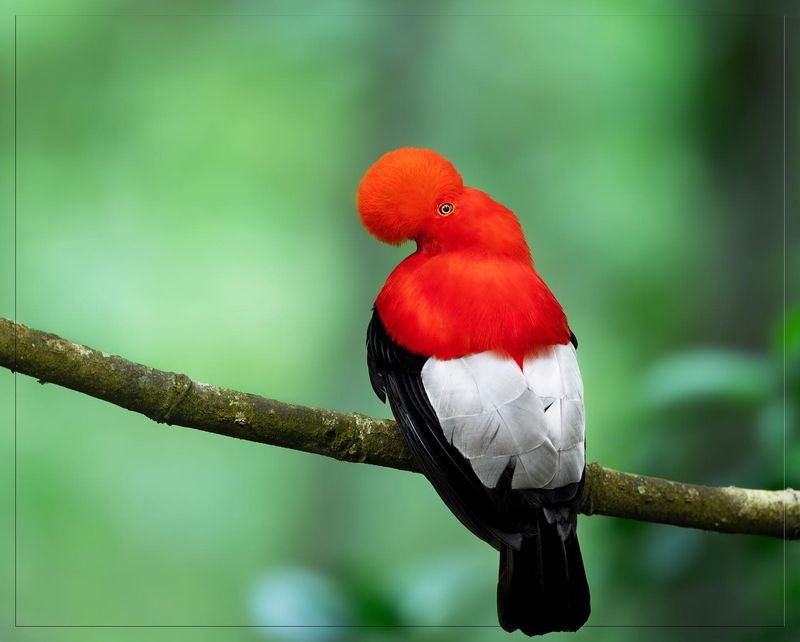
Scientists use these flashy birds as ecological indicators – their presence signals a healthy forest ecosystem. Because they require specific habitat conditions and plenty of fruit trees, thriving populations indicate intact, functioning forests.
When their numbers decline, it warns of environmental problems. Conservation efforts now focus on protecting corridors between forest fragments so these important seed-dispersers can maintain genetic diversity and forest health.


